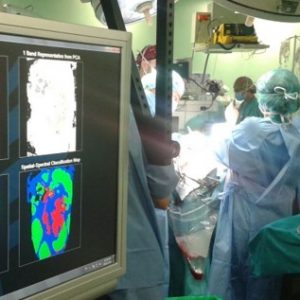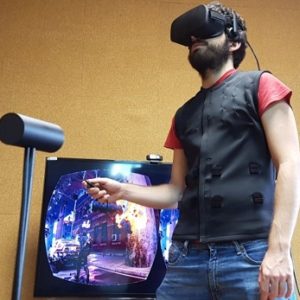Brief description of the solution and the added value it delivers
The system for translating voice or text in Spanish into Spanish Sign Language (LSE) consists of an automatic speech recogniser, a module for translating words in Spanish into a sequence of signs and a third module for representing the signs by means of an animated agent. Field tests in restricted fields show that the system is capable of translating with nearly 100% accuracy, allowing it to operate in real time. The system is simple to adapt to new fields of application. This technology has been developed by UPM’s Speech and Machine Learning Technology Group in collaboration with FCNSE, a Spanish foundation that works to eliminate communication barriers. This technology has already been used to develop four prototypes in various fields of application.
Description of the technological basis
The system for translating voice or text in Spanish into Spanish Sign Language (SSL) consists of an automatic speech recogniser, a module for translating words in Spanish into a sequence of signs and a third module for representing the signs by means of an animated agent.
The speech recognition system recognises continuous speech and is speaker-independent. The translation module combines three technologies: translation based on examples, translation based on expert rules and statistical translation. Combining the different strategies makes it possible to benefit from the advantages of each of them.
The sign representation module shows the sequence of signs resulting from the translation by means of an agent animated in 3D.
It is an innovative solution in the field of ICTs applied to the area of independent living, e-inclusion and governance, as a system for informing and interacting with deaf individuals, which could potentially be used at information points or cash machines, on websites, etc.
Business needs / application
Deaf people have a lot communication barriers that end up creating a significant number of problems educationally, socially and culturally.
Needs of deaf individuals in education.
Forty-seven per cent of the deaf population have no schooling or are illiterate. Furthermore, only between 1 and 3% of the deaf population has completed university studies, compared to 21% of the Spanish population as a whole (Spanish National Statistics Institute [INE], 1999; Spanish Ministry of Education, Culture and Sport [MECD], 2000/2001).
Needs in terms of social integration.
Deaf pupils end up in programmes for individuals who have not complicated compulsory secondary education ten times more often than pupils as a whole (INE, 1999). Another illuminating fact is that between 45 and 50% of deaf children and youths have psychological disorders, compared to a maximum of 25% for the rest of the population (European Society for Mental Health and Deafness, 2000). Finally, it should be noted that unemployment is much more prevalent among deaf people and, in particular, among deaf women (INE, 2003).
It is possible to identify specific needs from these general issues.
-
Subtitling of audiovisual content in LSE. This aspect is ever more important, in view of the 2010 law on audiovisual communication, which imposes very high levels of subtitling, making automatic tools necessary.
-
Translation of websites into LSE, making them easier for deaf people to access.
-
Generating the information offered at information points or cash machines in LSE.
-
Translation of educational content into LSE, for the education and training of deaf people.
‘Deaf people have problems with reading, writing and understanding Spanish. Translating information into SSL allows content and services to be made accessible to deaf individuals’
Competitive advantages
-
Correct translation rate of nearly 100% for restricted fields (< 1,000 words).
-
Operation in real time for direct interaction services.
-
Independent of the speaker in the case of translation from speech.
-
Easy to adapt to a specific field of application.
-
Flexibility to be adapted to other languages and sign languages.
-
Sign vocabulary already developed, with more than 1,000 signs available. That vocabulary includes the description of the signs in both SEA (alphabetic writing system) and HamNoSys.
-
The signs have already been generated, they can be used in different contexts and it is not necessary to design them again.
-
There is an easy-to-use visual tool for designing new signs, in both SEA and HamNoSys.
-
Prototypes in various restricted fields of application: renewal of the Spanish identity document (DNI) or driving licence, at reception in a hotel or at a municipal transport company information point.
|
|
|
References
-
Research group with extensive experience in research and working with industry.
-
Technology developed in collaboration with the Spanish foundation dedicated to eliminating communication barriers, FCNSE.
-
Prototypes have been developed and assessed in various restricted fields of application: renewal of the Spanish identity document (DNI) or driving licence, at reception in a hotel or at a municipal transport company information point.
Stage of development
-
Concept
-
Research
-
Lab prototype
-
Industrial prototype
-
Production
Contact
LSE TRANSLATOR contact
Rubén San Segundo Hernández, José Manuel Pardo Muñoz
e:
e:
w: http://www.gth.die.upm.es
UPM contact
Innovation and Entrepreneurship Programmes
Technological Innovation Support Centre (CAIT) – UPM
e:















